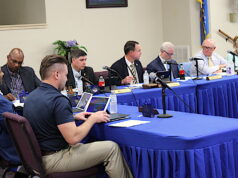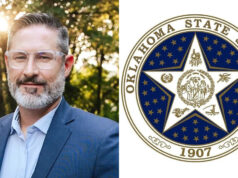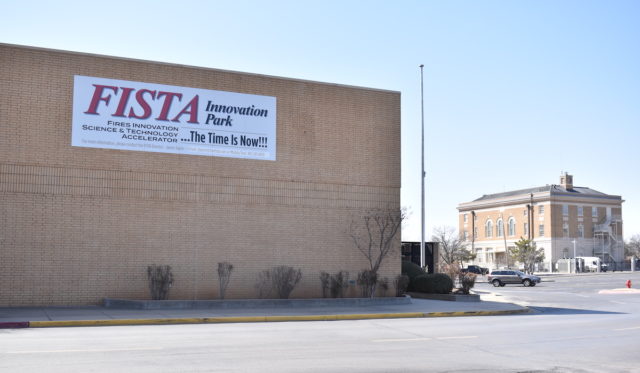
LAWTON — The Lawton Central Mall sits in the center of a sunken concrete parking lot, its drab exterior marred by the shadowed outline of store signs that were taken down as shops left the facility. On its west side, where Sears used to be, a white canvas draped along the external wall creates a sharp contrast. It reads “FISTA Innovation Park.”
The space is slated to be the future home of the Fires Innovation Science & Technology Accelerator, an initiative to boost the local economy by attracting defense contractors, technology companies and researchers to Lawton. The creators of FISTA envision a facility where companies can work closely with military operations at nearby Fort Sill in a high-security environment. They have projected that FISTA will bring hundreds of jobs to the area — as many as 250 in the first two years.
The City of Lawton has shelled out millions to invest in this vision, including purchasing the Central Mall for $14.45 million last year and giving the project another $2 million for construction costs.
These expenditures came as a shock to some Lawton citizens, who have pointed to a lack of other improvements in the aging city and have questioned the use of infrastructure and development funds on the FISTA project.
But the effort has widespread support at the local, state and federal levels. In addition to financial support from Lawton, FISTA received a $1 million federal earmark in the 2022 National Defense Authorization Act. And, regardless of any lingering controversy, interior construction on the facility started this spring, officially kicking off an ambitious, and expensive, attempt to revitalize a central portion of the community.
The vision for FISTA
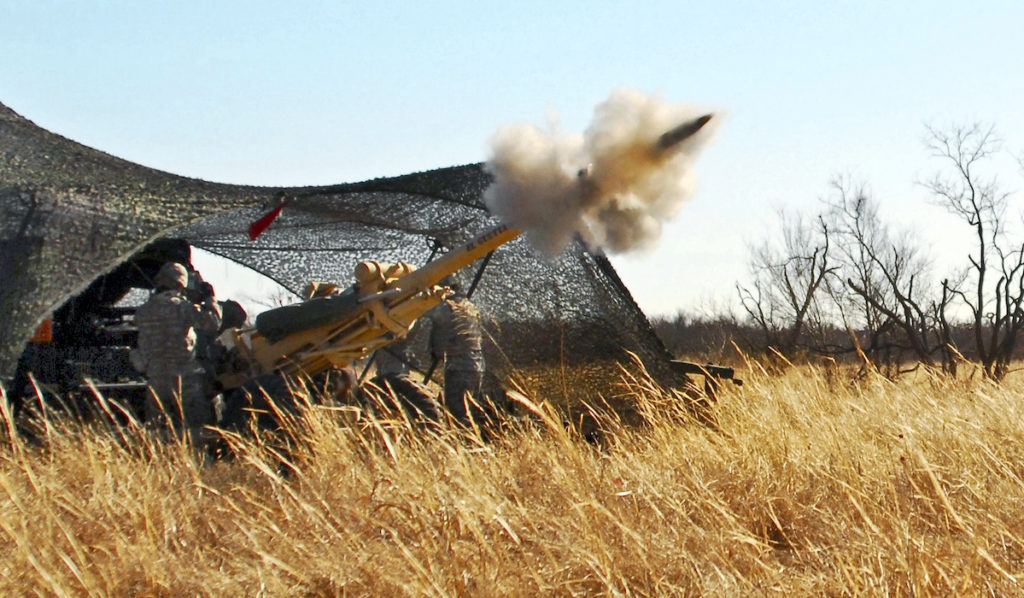
For Lawtonians, the sound of artillery fire is part of daily life. “That’s just Fort Sill,” they say, when a loud boom! boom! boom! interrupts a relaxing Sunday morning. For over a century, Lawton has grown up in support of the U.S. Army’s Fort Sill military base and the thousands of soldiers who have trained there.
Fort Sill is home to the field artillery training base for the Army’s field artillery school. And of the six priorities laid out in the 2019 Army Modernization Strategy, Fort Sill is responsible for two: long-range precision fires and air and missile defense.
According to James Taylor, a Navy veteran who serves as FISTA’s director, FISTA will allow contractors to develop defense capabilities tailored to the Army’s needs while making the research and development process more economical and efficient.
“This is where it’s different from years past,” Taylor said. “You would have defense contractors that would come to town with an already developed concept, idea, prototype, an actual production of something and try to sell it to the Army, whether they wanted it or not. They would spend two to three years trying to sell that to the Army. And if it didn’t work, they leave town. We can’t have that anymore.”
So far, 11 defense technology companies are in negotiations for long-term contracts with FISTA, according to Taylor. He said company identities will not be revealed until their leases are finalized. Once that happens, FISTA will provide basic structure and facilities, as well as security to maintain a classified environment. The companies will be responsible for building out office space and installing whatever proprietary equipment they require.
One company, Dynetics, has formally leased a corner of the facility to work on a specialized artificial-intelligence technology called CEMA AI.
Nate Slate, the director of fires and air and missile development at Dynetics, said the company hopes that having operations in FISTA will help facilitate military contracts.
“We’d like for it to be an easy button for R&D and [science and technology] and a convenient location for [Fort Sill] to influence it in progress,” he said.
Once FISTA is up and running, leaders hope defense technology companies and Army officials can sit down together and work out the specifications of systems that supports the military’s intended application.
Follow @NonDocMedia on:
Amid hopes of revitalization, city invests millions
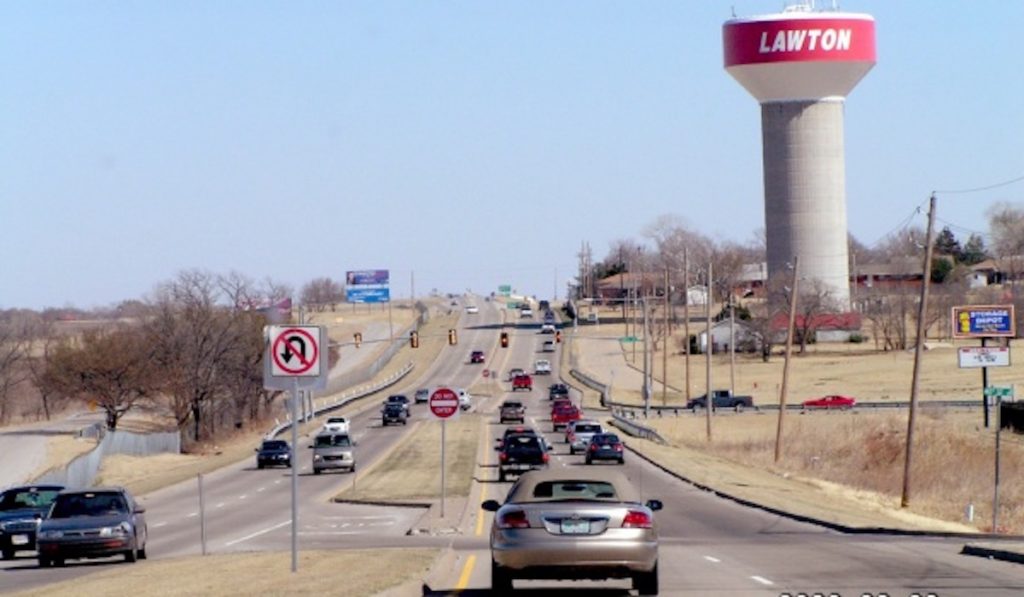
The beginning of construction on the FISTA project represents the fruit of more than three years of planning and development and many more years of community and industry leaders imagining a new character for Lawton.
In 2020, the Lawton City Council approved the creation of the FISTA Development Trust Authority to oversee purchases, planning and other operational and strategic requirements of the project.
“It is a feather in our cap, a tool in our toolbox,” said Lawton Mayor Stanley Booker.
He argues that FISTA will improve Fort Sill’s resilience.
“We will be seen as a community that supports their defense installation. All of these things work together to protect Fort Sill and the $2 billion impact they have locally,” he said.
City leaders also hope FISTA will bring much-needed industrial investments to Lawton, which has been losing businesses in recent years and registered a population decrease in the 2020 census.
The City Council considered several options for housing the FISTA project, including constructing a new facility or retrofitting the abandoned Fairmont Creamery building just a block away from the mall. After Sears went out of business, in 2017, and Dillard’s in 2020, the council determined that the mall space would be the most financially viable option.
A loan with Bank of Oklahoma financed the $14.45 million purchase. According to FISTA Development Trust Authority Chairman Clarence Fortney, rent payments from the remaining retailers in the mall have already paid more than $1 million toward that balance.
Lawton deputy city manager Richard Rogalski said the opportunity to regain control of the mall was appealing “from a city planner perspective.”
“We saw a prospect of decline that we felt was an opportunity to shore up,” Rogalski said. “The ability to further redevelop the mall — we haven’t had significant improvements in the mall since 2011.”
Rogalski said city planners hope the project will help revitalize downtown Lawton.
“Our other long-term goal is to have additional businesses in the downtown area do some renovations within the property alongside FISTA,” said Rep. Daniel Pae (R-Lawton).
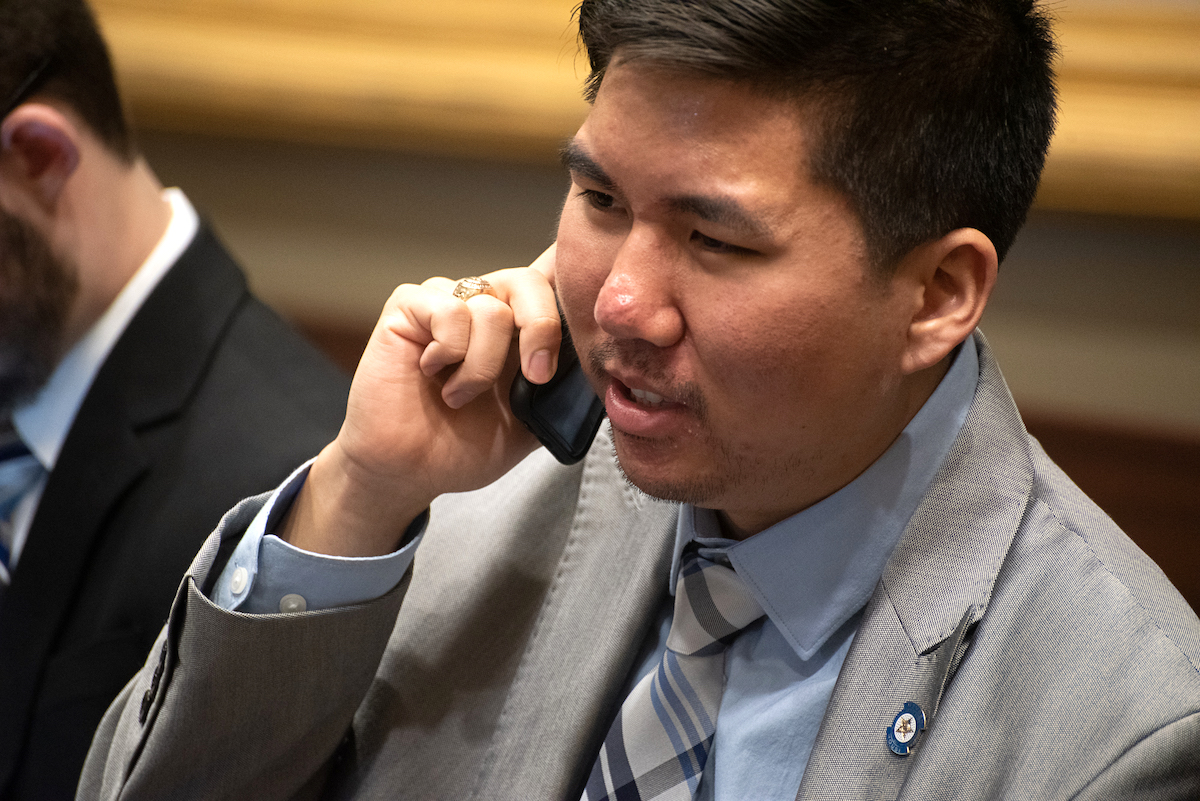
Pae said the changes will provide “quality of life and recreational activities” for local families but that the project will take time.
“It will take time for contractor negotiations for construction to be completed,” he said. “One thing I’ve experienced as a policymaker is you want instantaneous change and results as a policymaker, but we have processes in place and just practical challenges. The more investment we put in the front end and diligently work in the beginning stage, the more it will pay off for the community.”
The FISTA Development Trust Authority came head to head with the challenge of time last year, as escalating construction costs brought on by global supply chain issues and inflation threatened to push back the project.
The FISTA Authority requested another $5 million from the city in 2021, an amount that was eventually negotiated down to $2 million. The money came from a Capital Improvement Projects (CIP) fund voters passed in 2019 by consolidating two existing sales taxes and designating them for a list of infrastructure and industrial-development projects.
Some Lawton citizens were skeptical of the expenditure and of the money spent on the original purchase of the mall.
“If we’re looking to entice businesses to come to Lawton there are better ways of doing it that dropping $14.6 million in the hopes industry and corporations would lease the properties,” Timothy Dostan wrote in a Lawton Daily News piece. “We should have had an opportunity to vote on whether or not the city purchased the Central Mall. Sure we voted on the CIP (Capital Improvement Program) awhile back, but if the citizens knew that they were planning to do this with the money it NEVER would have passed!”
Former Lawton Constitution managing editor David Hale offered a similar sentiment in a Facebook post.
“A better explanation to taxpayers is needed,” Hale wrote.
According to Booker, Lawton’s mayor, the language in the CIP ordinance provides justification for using the money for FISTA.
Though the City Council ultimately approved the additional expense, Councilmembers Sean Fortenbaugh and Kelly Harris were initially hesitant.
“I’m uneasy about where we’re getting the money for this and how we’re going to pay for it because we keep dipping into our funds,” Fortenbaugh said. “I want to make sure we’re doing right for the citizens and we’re not hurting ourselves with these CIP funds.”
The City Council delayed the vote to allow the FISTA Authority time to answer councilmembers’ questions. The measure that passed called for the project to use an approach called “valued engineering,” which involves prioritizing price by using the least expensive materials and methodologies available for a construction project. According to Pae, local businesses make up more than 50 percent of contract bids for the construction.
Pae said that approving the funds came down to the construction timeline.
“If it had been delayed, it would have impacted the bidding process, and certainly that would have impacted negotiations with defense contractors,” Pae said.
Central Plaza does not feature in an online Citizens Capital Improvements Portal the city constructed so citizens can keep track of progress on construction projects funded by the CIP.
Booker argued that the FISTA project will improve the city’s capacity to maintain services and repair degrading infrastructure.
“A community gets its return on the investment through growing the community. The returns come back to the community through an increased economy,” he said. “If we come up with 250 high-tech jobs, that’s going to bring millions of dollars into the community, and that’s what creates the money that can fix the streets and pick up the trash.”
Pae agreed.
“This arose out of a longstanding conversation with community leaders and serving with the City Council,” said Pae. “This is another step moving forward to focus on how we grow as a community.”
Bringing people back, bringing Lawton back

The size of Lawton’s workforce has been steadily falling for several years, and the supporters of the FISTA initiative hope that it will help keep Lawton natives in the area.
Slate, from Dynetics, is a retired soldier who chairs a community consortium to promote STEM education and is a member of the Lawton Chamber of Commerce. He has also been involved in laying the groundwork for FISTA and has made it a priority for the project to incorporate STEM education for Lawton Public Schools.
In 2011, Slate recalled, Lawton’s Eisenhower High School obtained a coveted math and science scholarship sponsored by Northrup Grumman, where Slate worked at the time. He said the scholarship transformed the school and made the students attractive to universities and companies. But, like many young people with highly marketable skills, those students left Lawton to work elsewhere.
Jared Mulhousen is an unusual case in that respect. He went to high school in Lawton and studied software engineering at the University of Oklahoma. In 2021, he took a job with Dynetics.
Mulhousen said he appreciates being able to work in a high-tech field while staying close to home.
“You always hear about software engineers, how they’ll move to big cities and make good money. I just wanted to be near my family,” he said. “It was mostly me looking for the best opportunity in a state that I enjoy living in. When you’re comfortable and have a good paying job, you can give back to a community that you are familiar with.”
Educational opportunities for local students will be built into FISTA, which will include a STEM classroom. The University of Oklahoma and Oklahoma State University also have plans to establish research programs in the facility, according to Pae.
“The idea is that we can connect our teachers and students to engineers and professionals who are defense contractors,” said Fortney, the FISTA Trust chairman. “I have four granddaughters. My reason, why I’m driven, is that I want them to stay in the Lawton/Fort Sill area when they grow up and get jobs.”
Slate agreed that education is central to the vision for FISTA.
“If you really want to see the community change and maybe America change, you invest in these kids in the STEM education,” he said. “If you want to change the area, you want to get them a high-tech job locally, so they can come back to the community they grew up in and lift it.”
(Correction: This article was updated at 10:25 a.m. Tuesday, May 17, to correct the attribution of a quote.)










